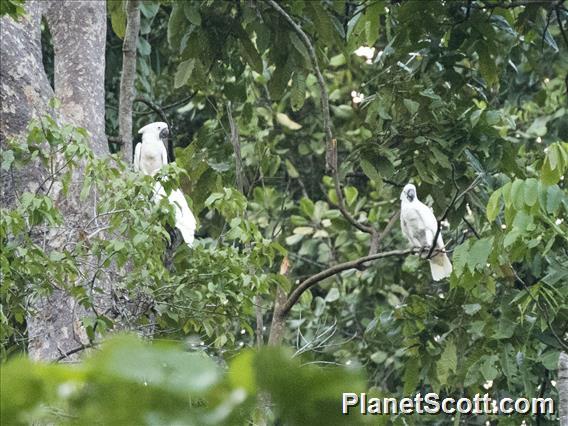White Cockatoo (Cacatua alba)

White Cockatoo (Cacatua alba)
×


White Cockatoo (Cacatua alba)
About White Cockatoo (Cacatua alba)
- Kingdom: Animals
- Phylum: Chordates
- Class: Birds
- Order: Parrots
- Family: Cockatoos
The white cockatoo, also known as the umbrella cockatoo, is a medium-sized all-white cockatoo endemic to tropical rainforest on islands of Indonesia. When surprised, it extends a large and striking head crest, which has a semicircular shape. The wings and tail have a pale yellow or lemon color which is exposed when they fly. It is similar to other species of white cockatoo such as yellow-crested cockatoo, sulphur-crested cockatoo, and salmon-crested cockatoo, all of which have yellow, orange or pink crest feathers instead of white.
Source: Wikipedia
Trips
Visits
-
2016-02-24
Indonesia - Sensitive Species, Indonesia

